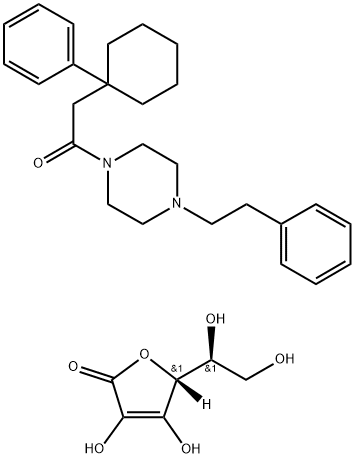Lactobionic acid
Synonym(s):4-O-β-D -Galactopyranosyl-D -gluconic acid
- CAS NO.:96-82-2
- Empirical Formula: C12H22O12
- Molecular Weight: 358.3
- MDL number: MFCD00078147
- EINECS: 202-538-3
- SAFETY DATA SHEET (SDS)
- Update Date: 2024-11-20 11:41:24

What is Lactobionic acid ?
Chemical properties
White to off-white crystalline powder
The Uses of Lactobionic acid
Lactobionic acid is mainly used in preservation solutions for organ transplantation. It is used to produce erythromycine lactobionate.
The Uses of Lactobionic acid
food additive
The Uses of Lactobionic acid
Arginine metabolite in bovine brain; clonidine-displacing substance activity
The Uses of Lactobionic acid
An inhibitor of matrix metalloproteinases
What are the applications of Application
Lactobionic acid is an inhibitor of matrix metalloproteinases
Definition
ChEBI: A disaccharide formed between beta-D-galactose and D-gluconic acid.
Biotechnological Production
Currently, lactobionic acid is produced by chemical synthesis using refined lactose
as feedstock. This process is expensive due to the energy demand. Alternatively,
Acidic Organic Compounds in Beverage, Food, and Feed Production 111
enzymatic processes have been suggested. For example, lactose could be reacted to
lactobionic acid using an enzymatic system with co-factor regeneration. First,
lactose is converted to lactobionolactone by a cellobiose dehydrogenase. This
reaction requires an electron acceptor, which is regenerated by a laccase reducing
oxygen to water. Finally, lactobionolactone spontaneously hydrolyzes to lactobionic
acid.
Moreover, microbial production of lactobionic acid has been described. In
a fed-batch cultivation of Burkolderia cepacia growing in a complex medium
(lactose, salts, peptone, and yeast extract), a final titer of 400 g.L-1, a yield of
approximately 1.0 g of lactobionic acid per gram of lactose, and a productivity of
1.67 g.L-1.h-1 have been achieved.
Another promising strategy for an inexpensive biotechnological process is the
utilization of cheap raw materials. For example, lactobionic acid could be obtained
from concentrated cheese whey by fermentation with Pseudomonas taetrolens. In
a fed-batch process, a product concentration of 164 g.L-1 with a productivity of
2.05 g.L-1.h-1 and a yield of 0.82 g of lactobionic acid per gram of lactose have
been observed. Furthermore, whole-cell biocatalysis using permeabilized
Zymonmonas mobilis cells and an equimolar mixture of lactose and fructose has
been tested. In a batch process, a maximum lactobionic acid concentration of
268 g.L-1 and a conversion rate of 72 % within 24 h have been measured. The
productivity of lactobionic acid was 11.2 g.L-1.h-1 .
Clinical Use
Erythromycin lactobionate is a salt with enhanced water solubility that is used for injections.
Purification Methods
Crystallise lactobionic acid from water by addition of EtOH. [NMR: Taga et al. Bull Chem Soc Jpn 51 2278 1978, Beilstein 17 III/IV 3392, 17/7 V 436.]
Properties of Lactobionic acid
| Melting point: | 113-118 °C(lit.) |
| alpha | 22.8 º (c=10, H2O) |
| Boiling point: | 410.75°C (rough estimate) |
| Density | 1.4662 (rough estimate) |
| refractive index | 26 ° (C=8.8, H2O) |
| storage temp. | Inert atmosphere,Room Temperature |
| solubility | 10 g/100 mL |
| form | Powder |
| pka | 3.28±0.35(Predicted) |
| color | White to Off-white |
| optical activity | [α]20/D +25°, c = 10 in H2O |
| Water Solubility | 10 g/100 mL |
| Merck | 5342 |
| BRN | 95054 |
| CAS DataBase Reference | 96-82-2(CAS DataBase Reference) |
Safety information for Lactobionic acid
| Signal word | Warning |
| Pictogram(s) |
 Exclamation Mark Irritant GHS07 |
| GHS Hazard Statements |
H315:Skin corrosion/irritation H319:Serious eye damage/eye irritation H335:Specific target organ toxicity, single exposure;Respiratory tract irritation |
| Precautionary Statement Codes |
P233:Keep container tightly closed. P260:Do not breathe dust/fume/gas/mist/vapours/spray. P261:Avoid breathing dust/fume/gas/mist/vapours/spray. P264:Wash hands thoroughly after handling. P264:Wash skin thouroughly after handling. P271:Use only outdoors or in a well-ventilated area. P280:Wear protective gloves/protective clothing/eye protection/face protection. P304:IF INHALED: P312:Call a POISON CENTER or doctor/physician if you feel unwell. P321:Specific treatment (see … on this label). P340:Remove victim to fresh air and keep at rest in a position comfortable for breathing. P362:Take off contaminated clothing and wash before reuse. P302+P352:IF ON SKIN: wash with plenty of soap and water. P304+P340:IF INHALED: Remove victim to fresh air and Keep at rest in a position comfortable for breathing. P305+P351+P338:IF IN EYES: Rinse cautiously with water for several minutes. Remove contact lenses, if present and easy to do. Continuerinsing. P332+P313:IF SKIN irritation occurs: Get medical advice/attention. P337+P313:IF eye irritation persists: Get medical advice/attention. P403:Store in a well-ventilated place. P405:Store locked up. P403+P233:Store in a well-ventilated place. Keep container tightly closed. P501:Dispose of contents/container to..… |
Computed Descriptors for Lactobionic acid
Lactobionic acid manufacturer
Global Calcium Pvt Ltd
New Products
(S)-3-Aminobutanenitrile hydrochloride 4-Methylphenylacetic acid N-Boc-D-alaninol N-BOC-D/L-ALANINOL Tert-butyl bis(2-chloroethyl)carbamate N-octanoyl benzotriazole 3-Morpholino-1-(4-nitrophenyl)-5,6-dihydropyridin- 2(1H)-one Furan-2,5-Dicarboxylic Acid S-2-CHLORO PROPIONIC ACID ETHYL ISOCYANOACETATE 2-Bromo-1,3-Bis(Dimethylamino)Trimethinium Hexafluorophosphate 4-IODO BENZOIC ACID 3-NITRO-2-METHYL ANILINE 1-(2,4-DICHLOROPHENYL) ETHANAMINE (2-Hydroxyphenyl)acetonitrile 4-Bromopyrazole 5,6-Dimethoxyindanone 2-(Cyanocyclohexyl)acetic acid 4-methoxy-3,5-dinitropyridine 1-(4-(aminomethyl)benzyl)urea hydrochloride 2-aminopropyl benzoate hydrochloride diethyl 2-(2-((tertbutoxycarbonyl)amino) ethyl)malonate tert-butyl 4- (ureidomethyl)benzylcarbamate Ethyl-2-chloro((4-methoxyphenyl)hydrazono)acetateRelated products of tetrahydrofuran








You may like
-
 Lactobionic acid CAS 96-82-2View Details
Lactobionic acid CAS 96-82-2View Details
96-82-2 -
 Lactobionic acid 95% CAS 96-82-2View Details
Lactobionic acid 95% CAS 96-82-2View Details
96-82-2 -
 Lactobionic acid 97% (HPLC) CAS 96-82-2View Details
Lactobionic acid 97% (HPLC) CAS 96-82-2View Details
96-82-2 -
 Lactobionic acid, 97% CAS 96-82-2View Details
Lactobionic acid, 97% CAS 96-82-2View Details
96-82-2 -
 Lactobionic Acid (mixture of Acid form and Lactone form) CAS 96-82-2View Details
Lactobionic Acid (mixture of Acid form and Lactone form) CAS 96-82-2View Details
96-82-2 -
 Lactobionic acid CAS 96-82-2View Details
Lactobionic acid CAS 96-82-2View Details
96-82-2 -
 Lactobionic acid CASView Details
Lactobionic acid CASView Details -
 Lactobionic acid CAS 96-82-2View Details
Lactobionic acid CAS 96-82-2View Details
96-82-2